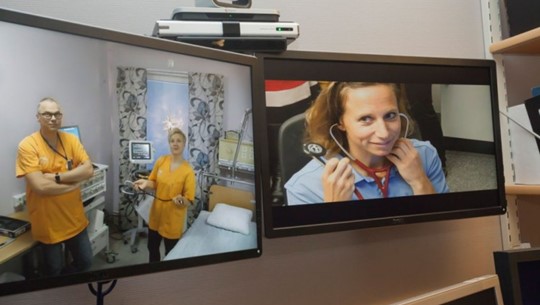Remote on-call support from Kalix hospital to the health centres in Övertorneå and Överkalix has been a routine practice for three years. During the evening, at night and at weekends there is no doctor at the health centre in Övertorneå. Emergency cases, where appropriate, are handled remotely via video conference. The patient is received by a nurse who will examine them and take the required samples. The nurse has the opportunity to contact primary care at hospitals and if needed, a doctor can talk to the patient face to face via video system. The doctor can also use a remote-controlled camera to, for example, zoom in for closer examination.
This working model enables patients to receive health care closer to their homes to a greater extent. Patients feel an increased sense of safety and the working model reduces the number of acute cases that are treated at Kalix hospital. The increased level of coordination results in a more efficient use of available resources for care givers.
Citizens who require health care outside normal working hours, for example, elderly people with multimorbidity or patients with infections.
The service is also used by nurses at the health centers he on-call doctor at the hospital.
 Distance treatment
Counseling via online tools with associated treatment or own treatment.
Distance treatment
Counseling via online tools with associated treatment or own treatment.
 Distance monitoring
Social care remotely with sensors, cameras, reminders and data collection.
Distance monitoring
Social care remotely with sensors, cameras, reminders and data collection.
 Distance meetings
Close care concepts that move the point of healthcare closer or into the citizens' own homes.
Distance meetings
Close care concepts that move the point of healthcare closer or into the citizens' own homes.
 New distance-spanning solutions
New innovative solutions, new national infrastructure for digital services and service models where citizens can take greater responsibility.
New distance-spanning solutions
New innovative solutions, new national infrastructure for digital services and service models where citizens can take greater responsibility.
 Show all solutions
Show solutions from all four categories
Show all solutions
Show solutions from all four categories
